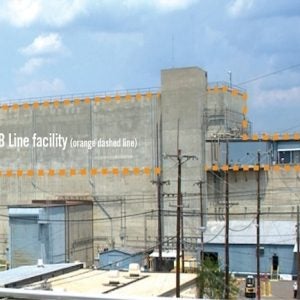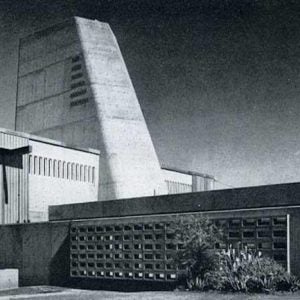 The Japan Atomic Energy Commission (JAEC) has updated its guidelines for the use of plutonium for the first time in 15 years to explicitly state that it will endeavour to reduce stockpiles of the material. As part of these efforts, the Rokkasho reprocessing plant in the Aomori Prefecture, currently under construction, will be mandated to extract only the amount of plutonium from used nuclear fuel that is required to make mixed oxide (Mox) fuel for Japan’s nuclear plants.
The Japan Atomic Energy Commission (JAEC) has updated its guidelines for the use of plutonium for the first time in 15 years to explicitly state that it will endeavour to reduce stockpiles of the material. As part of these efforts, the Rokkasho reprocessing plant in the Aomori Prefecture, currently under construction, will be mandated to extract only the amount of plutonium from used nuclear fuel that is required to make mixed oxide (Mox) fuel for Japan’s nuclear plants.
The new guidelines require electric power companies to cooperate in the use of plutonium at those Japanese plants that can use Mox fuel to steadily decrease the stockpile, which is currently put at approximately 47.3t, including about 36.7t stored in the UK and France.
Plutonium stockpile reduction was part of the New Strategic Energy Plan approved by the Cabinet of Prime Minister Shinzo Abe on 3 July.
The previous guidelines, set in 2003, stipulated that Japan must not possess plutonium unless there was a stated purpose for using the material. The revised guidelines mentioned reducing the stockpile for the first time, but did not set specific goals or a timeframe, saying that the maximum amount allowed "will not exceed the current level”.
The new guidelines limit the amount of plutonium that can be extracted from used fuel at Rokkasho, which is scheduled to begin operation in fiscal 2021, to the amount needed to produce Mox fuel. As to the plutonium stored abroad, the guidelines also urge utilities to cooperate closely to steadily reducing the amount. The utilities are required to publish their plutonium usage plans every year.
Japan has been recycling nuclear fuel to make Mox for its reactors. However, only four nuclear reactors that can use Mox fuel are in operation after the March 2011 Fukushima nuclear crisis. With the Rokkasho plant in full service, the amount of plutonium will increase by up to about 8 tonnes a year. Plutonium needs to be used at 16 to 18 power reactors to consume the full amount, according to estimates. Under the circumstances, operations at the reprocessing plant will have to be strictly limited.
Photo: Rokkasho reprocessing plant is due to start operating in FY 2021 (Photo JNFL)






